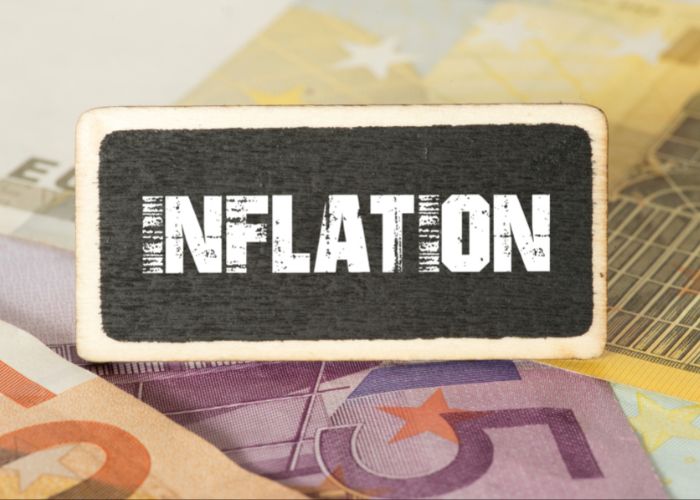MADRID – Spain is the Eurozone country with the lowest harmonized consumer price index* (6.6%) in November. This is according to preliminary data from the EU statistics agency Eurostat. Year-on-year inflation in the eurozone was 10% in November.
That is more than 3 points higher than inflation in Spain. And, furthermore, the first time in a year and a half that there has been a slowdown. Recorded inflation in Spain itself remained at 6.8%, according to preliminary data from the INE released this Tuesday. Eurostat‘s harmonised data (HICP)* are the lowest in the euro area at 6.6%, even lower.
While Spain’s harmonised rate was 6.6%, France’s was 7.1%, followed by Malta (7.2%), Luxembourg (7.3%), Cyprus (8.3%) and Ireland, Greece and Finland (all three with 9%).
Looking at the non-harmonised CPI, France announced an inflation rate of 6.2% on Wednesday. This was lower than Spain’s INE at 6.8%.
The above figures are followed by Portugal (10.3%), Belgium (10.5%), Slovenia (10.8%), Austria (11.1%), the Netherlands (11.2%), Germany (11.3%), Italy (12.5%) and Slovakia (15.1%).
Highest inflation in Baltic countries
At the higher end of the spectrum, the Baltic countries of Latvia, Lithuania and Estonia continue to be hardest hit by the price increase at 21.7%.
The figures for November come after the record of 10.6% in October. And after registering 5.1% in January; 5.9% in February; 7.4% in March and April; 8.1% in May; 8.6% in June; 8.9% in July; 9.1% in August and 9.9% in September.
Main components of inflation in the euro area
After analyzing the main components of inflation in the euro area, energy recorded the highest year-on-year rate in November (34.9%, compared to 41.5% in October), followed by food, alcohol and tobacco (13.6%, compared to 13.1% in October). Next come industrial goods (6.1%, the same as in October) and services (4.2%, compared to 4.3% in October).
Moderated inflation for November in Spain
According to the Ministry of Economic Affairs and Digital Transformation, inflation in Spain moderated for the fourth consecutive month to 6.6% in November. That is seven-tenths less than in October, thanks to the positive impact of the measures taken to counteract the rise in prices. In this regard, the ministry refers to measures related to transport.
“Spain is the country with the lowest harmonised inflation rate of the 19 countries that make up the Eurozone. Inflation has fallen by almost four points since its peak last July, leading to a further improvement in competitiveness for companies and the Spanish economy,” said the minister.
A pessimistic European Central Bank
Inflation has not peaked. And interest rate hikes will continue to occur. These were the conclusions of Christine Lagarde, President of the European Central Bank. She spoke before the European Parliament’s Committee on Economic Affairs last Monday. Lagarde: “It has been a difficult year for Europeans. The Russian invasion has threatened our energy security and caused inflation to be well above our targets. The consequences are being felt all over Europe and the rest of the planet. The very hard Energy costs were key to inflation’s explosion in Europe, reaching 10.6% in October.”
Interest rates as the main instrument
According to Lagarde, interest rates are and will remain the most important tool against inflation. A higher rate reduces demand pressure, makes it more expensive to obtain money and influences citizens and businesses when it comes to spending, saving and investing.
“Adjustments will take time. Rates will influence future inflation and act as a watchdog against second-round effects that would hurt productive capacity. Strong labour markets, with low unemployment, will support higher wages, which are picking up, and we will analyze the implications for continuing to assess the medium-term inflation outlook.”
Temporary and tailor-made economic support
“Economic support for affected groups should be temporary, tailored so it doesn’t weaken incentives or demand,” Lagarde said: “We are committed to reducing inflation, we are going to take the measures and we are going to raise rates up to 2%. Also in this environment and with uncertainty, we will make decisions. We will see how far we can go with a step-by-step evaluation”.
Will there be another peak month after October?
“Inflation reached a record 10.6% in October,” said Lagarde: “I don’t know if I would dare say the peak was October. I would be surprised if October is maxed out. But eventually, inflation will fall, also because of our monetary policy and the bottlenecks that will disappear. Although at the moment we do not see the elements that allow us to draw conclusions that we are at the maximum and that it will decrease”.
Also read: October inflation moderation
What is the Harmonised Consumer Price Index?
*The harmonised European price index (HICP) has been developed to compare the inflation rates of the member states of the European Union. This index is a measure of the average price consumers pay for a ‘shopping basket’ of goods and services that conforms to the market in European countries.


